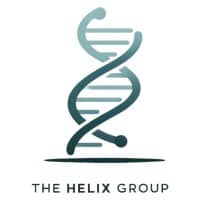Why OKRs may suffer the same fate as MBOs
- group Admin
- event_available 17-Oct-2024
As we observe the growing popularity of OKRs, it’s hard not to draw parallels with the
trajectory of MBOs. The adage, “Those who forget history are doomed to repeat it,”
seems particularly apt in this context. It’s a common trend in the Agile, DevOps, and
Agility communities to introduce new tools and concepts as replacements for
traditional ones deemed outdated or ineffective. However, these communities often fall
into the trap of not fully understanding or misapplying these traditional tools and
concepts. This is evident in the case of OKRs and MBOs.
Let’s delve into a few instances that illustrate this point. One such example comes from
a leading collaboration software company’s comprehensive guide to OKRs. The guide
states, “OKRs are a refinement of a widely used practice of management by objectives
(MBO). The difference is that OKRs are a more collaborative process as opposed to a
top-down bureaucratic process. Peter Drucker – who first popularized MBO – suggested
that a manager should review the organization’s goals and then set the worker’s
objectives.” This interpretation not only misrepresents Drucker and MBOs but also
highlights a lack of thorough research.
To understand this better, let’s revisit the origins of MBOs and their intended use versus
their misuse by American companies and management. MBO theory is believed to have
originated in the 1950s at General Electric under VP Harold Smiddy, the founder of GE’s
Crotonville training center. Peter Drucker, having observed MBOs at GE, expanded upon
the concept and emphasized the value of MBO as a tool for long-term planning and
focus.
During the period when MBO was gaining traction in American corporations, Dr. Drucker
was a professor at the New York University School of Business. His office neighbor was
none other than Dr. W. Edwards Deming. In a story shared by Dr. Deming, he once
approached Dr. Drucker to express his concern about MBOs being implemented with
short-term numerical goals, contrary to Drucker’s intention of it being a strategic
management tool.
Upon hearing this, Drucker investigated how MBOs were being implemented in
organizations and found that they were often misused, sometimes in ways diametrically
opposed to his original intent. In his subsequent writings, Drucker sought to clarify MBO
and curb its misuse.
So, how did Drucker envision the use of MBOs? He intended for the relationship
between the manager and direct report to be a collaborative one, where they would
discuss opportunities and challenges in relation to the organization’s strategy. He never
advocated for managers to unilaterally set objectives for their direct reports or use them
as a control tool.
In another instance that helps explain how this misinformation happens, David Wilsey,
the CEO of the Balanced Scorecard Institute, comments in his article “Using OKRs with
Balanced Scorecard” that there is no single thought leader in the OKR field, leading to a
crowdsourced evolution of the methodology. This lack of discipline in its application can
result in significant variations in effectiveness. If you’re skeptical, just take a look at the
numerous Guides to OKRs being published and the variation in suggested practices.
This trend is likely to result in the misuse of OKRs in many organizations, eventually
leading to the development of a new tool to replace OKRs and address their perceived
shortcomings. To see the reality, just observe how many managers are already using
OKRs as a top-down control tool.
The ADAPT program aims to mitigate these malpractices by vetting materials to ensure
they are research-based and focus on proven concepts and tools.
Check out the Growth and Agility Skills Portrait (GRASP) from The Helix Group.
Individuals can take the skills portrait for FREE and assess themselves on the 42 skills
needed in a transformation.
Coming Soon
PIVOT – Assesses the seven dynamic attributes needed in a transformation by every
organization.
ADAPT – The first of its kind, systemic immersive cohort based transformational
learning agility program.



